Thursday, Dec 11, 8:45 am
May 23, 2017
Tuesday
Middle School Science Showcase
-

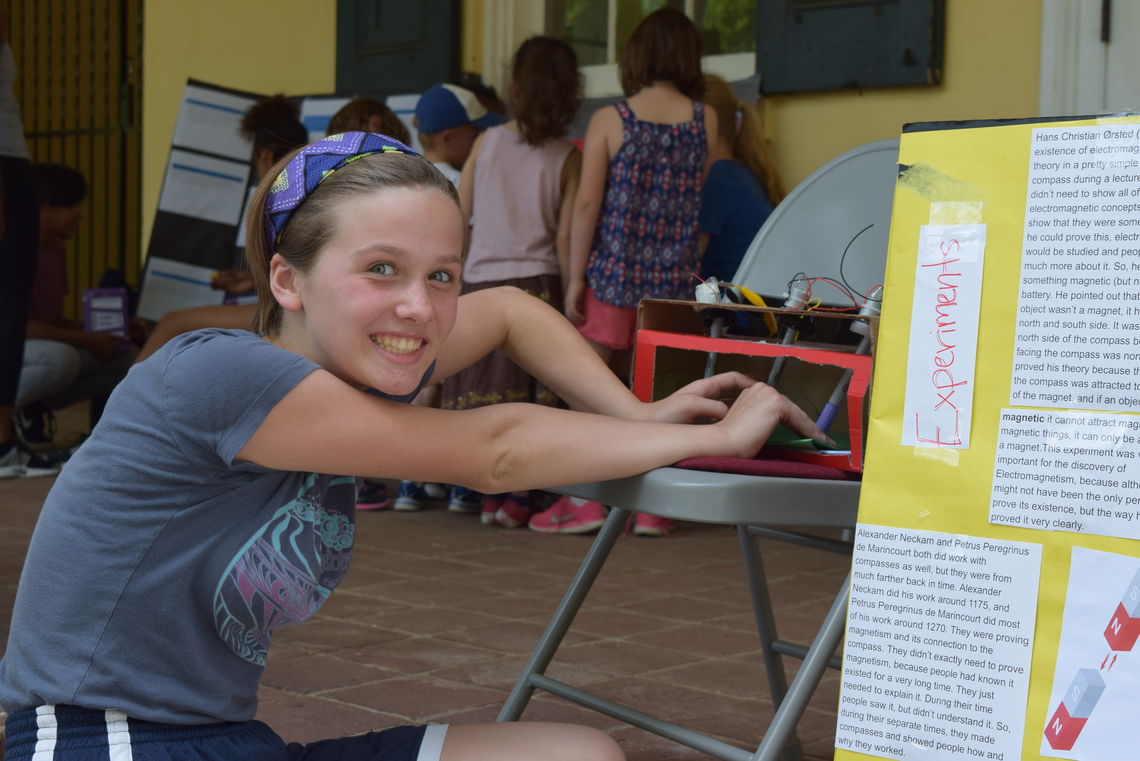
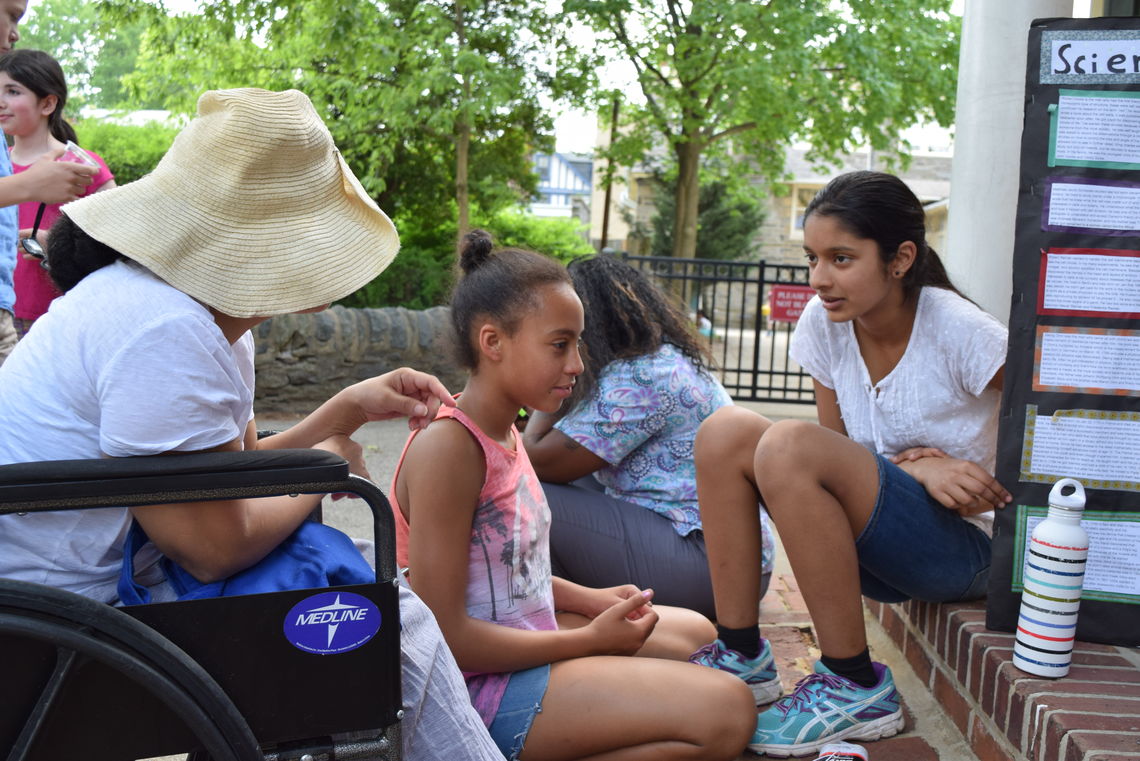
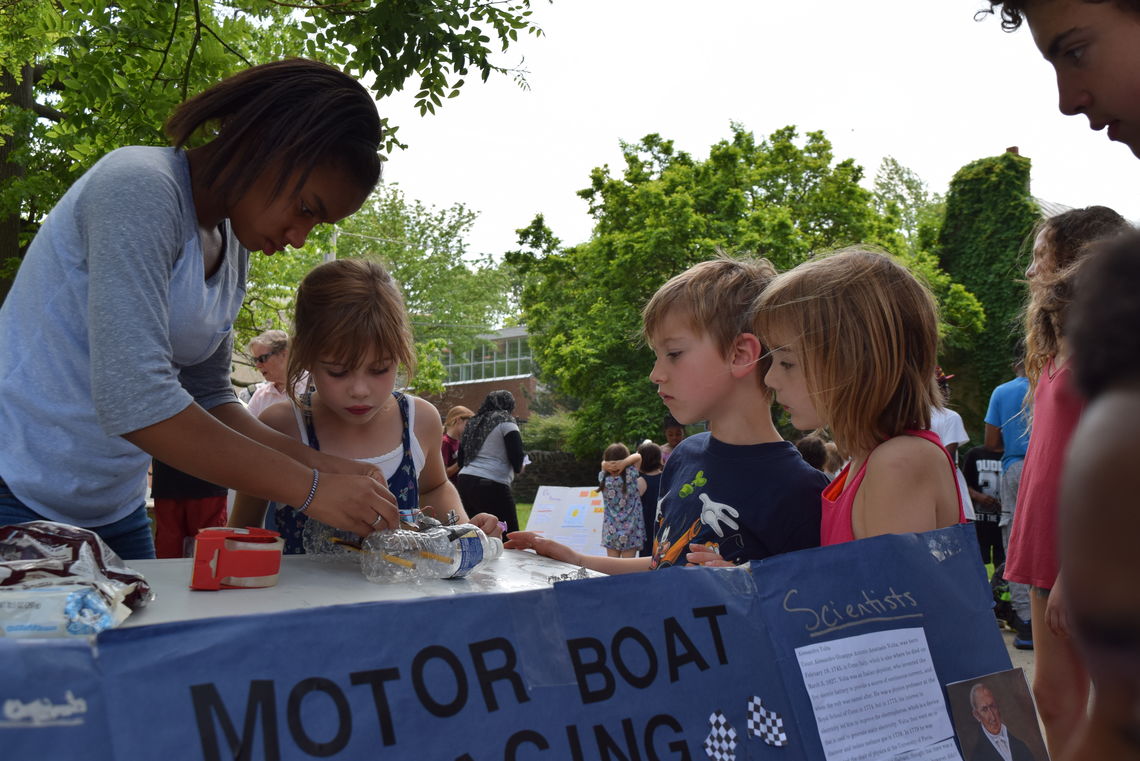
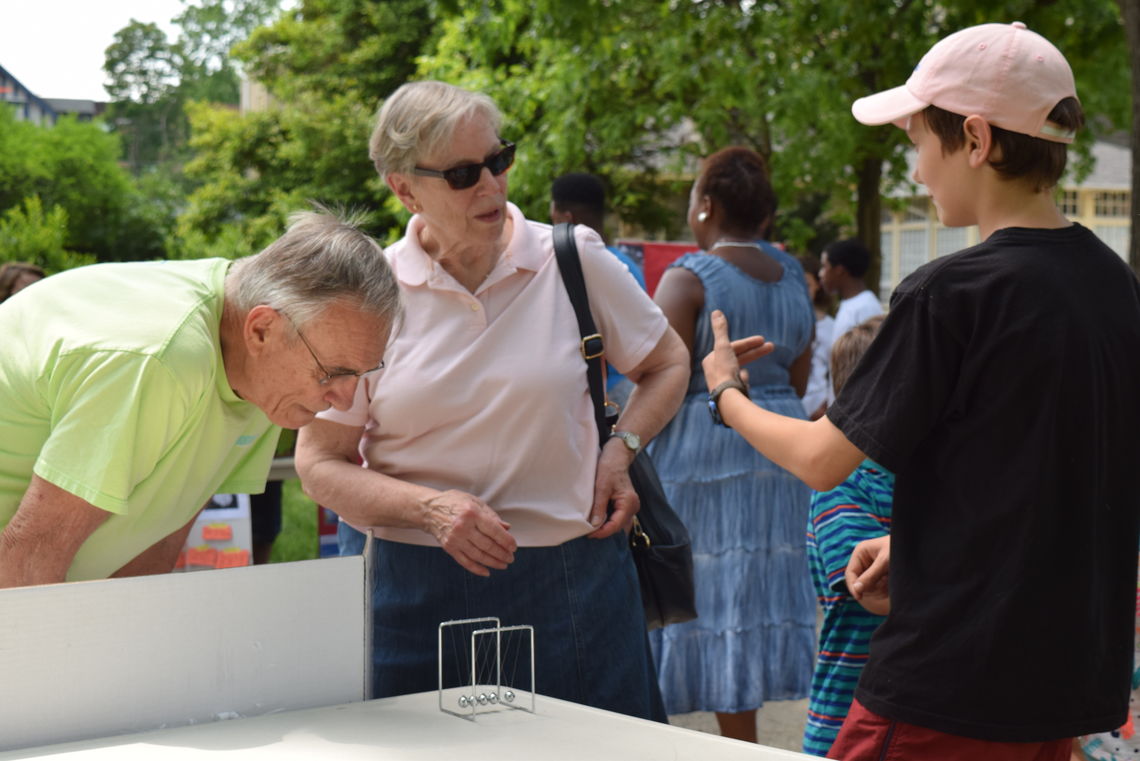
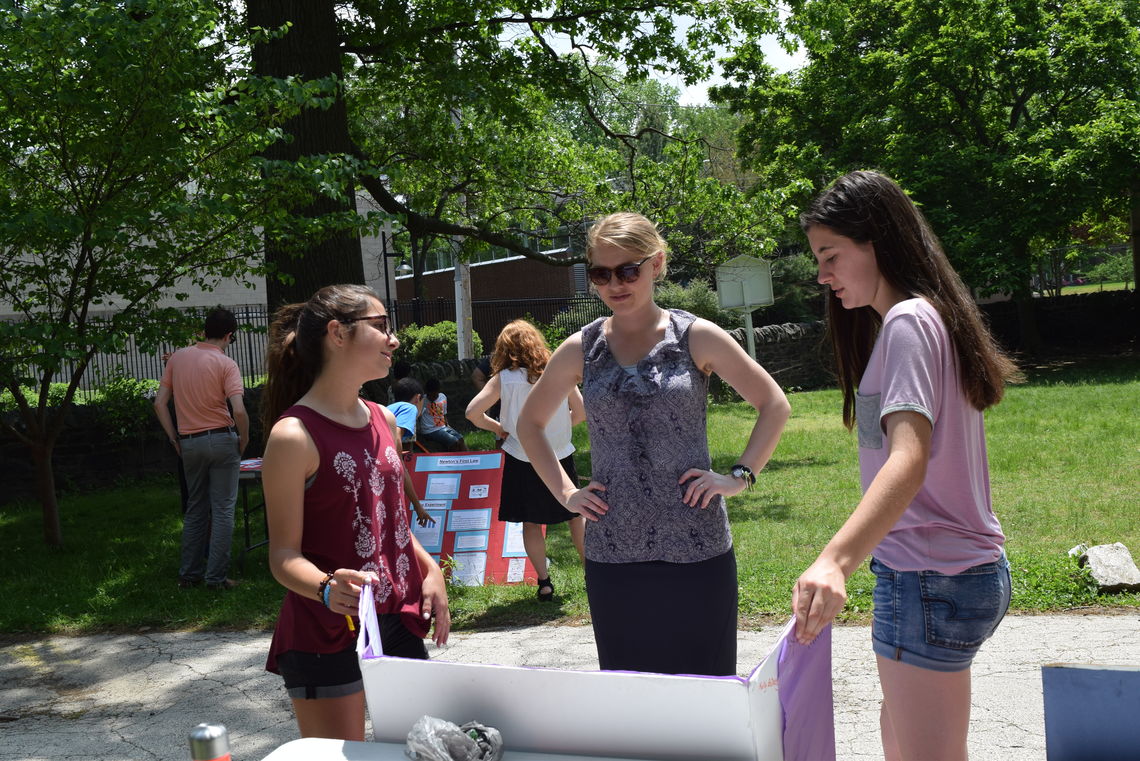
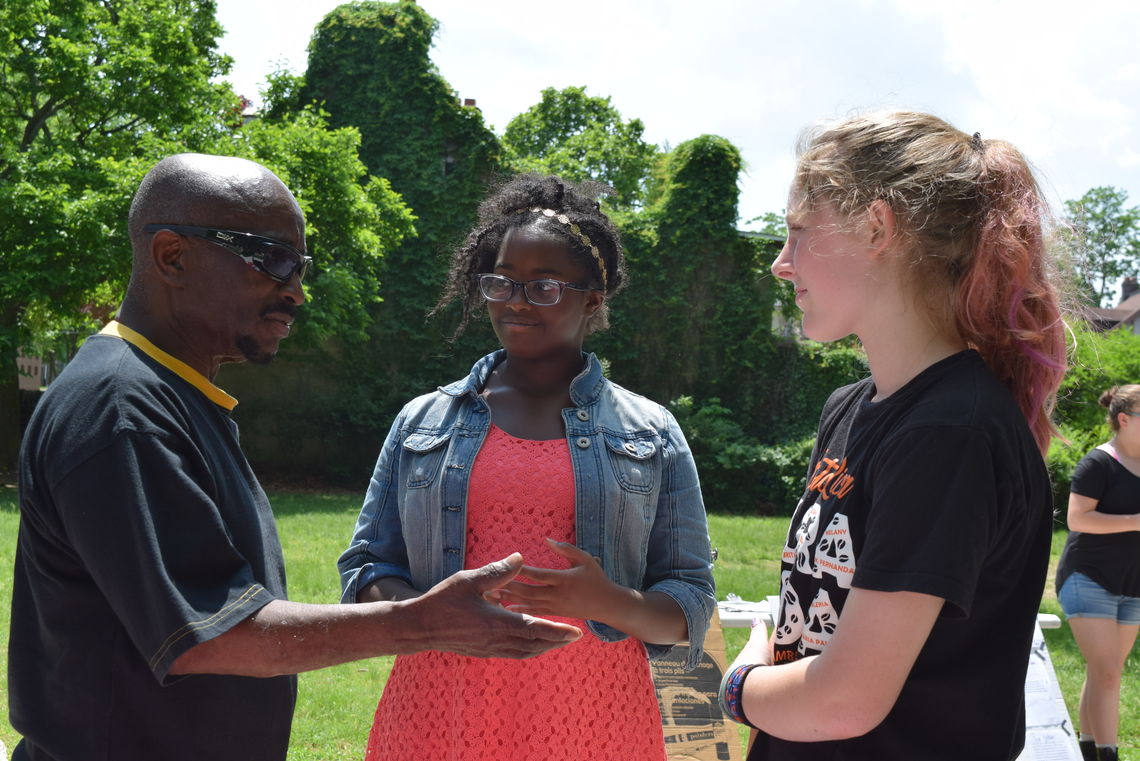
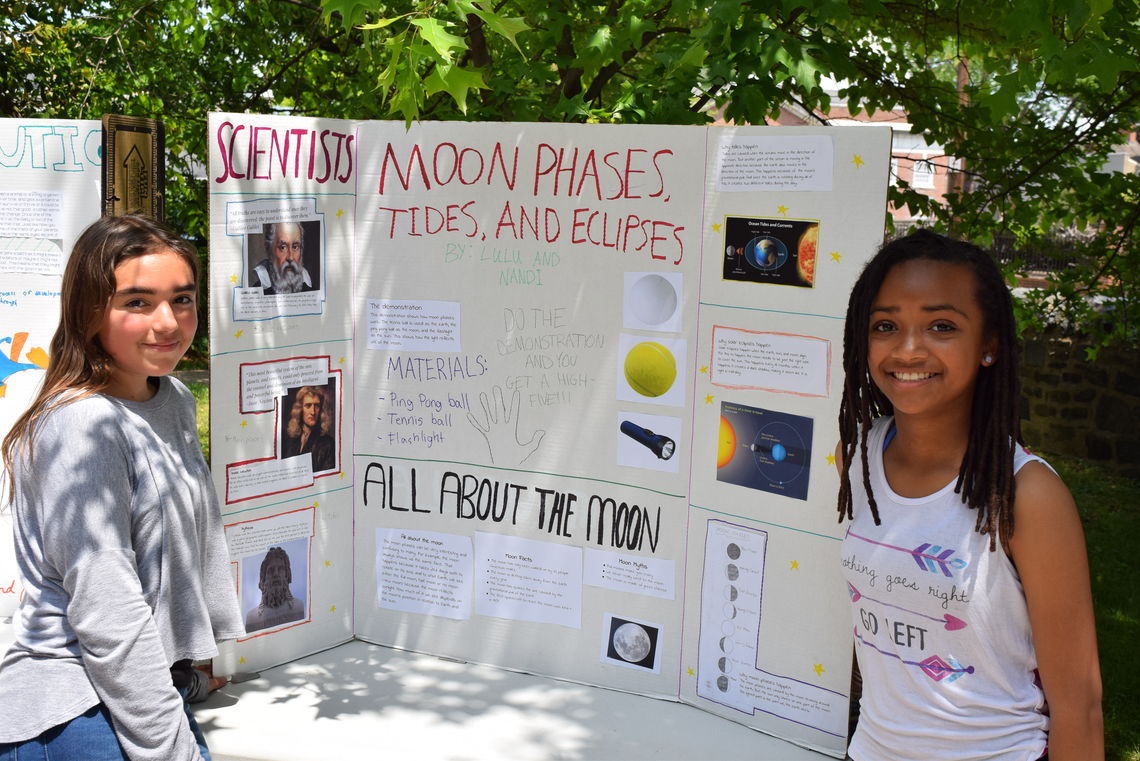
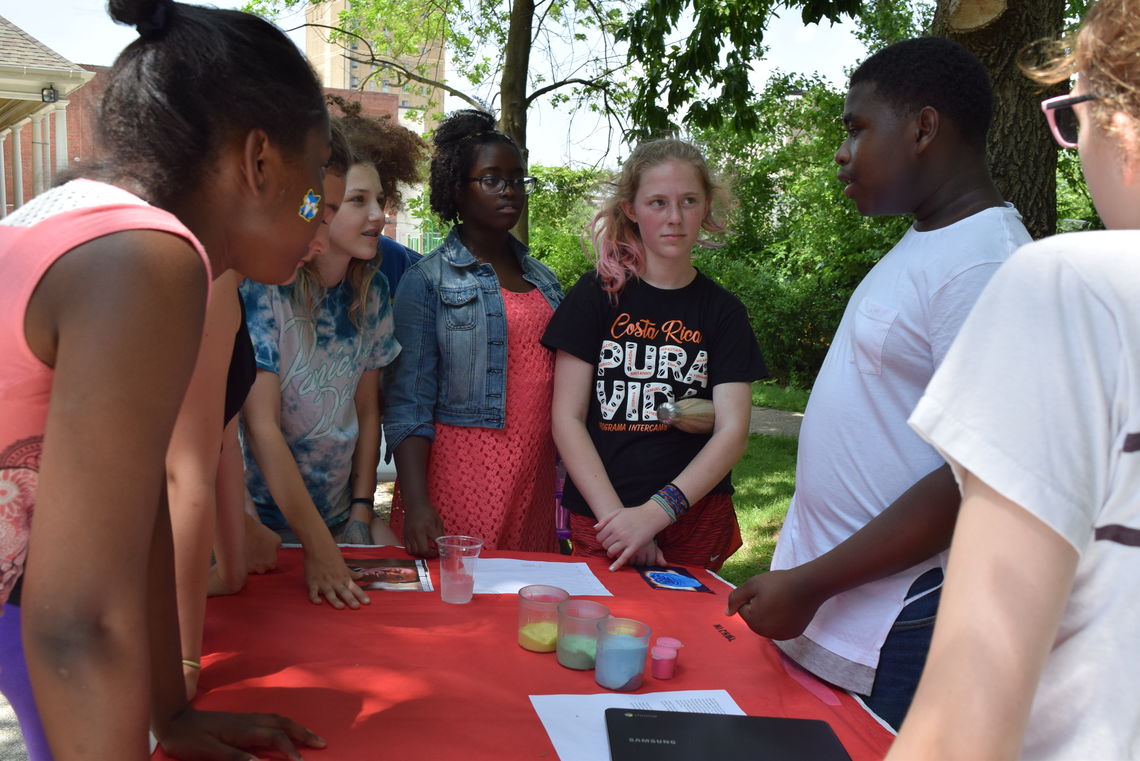

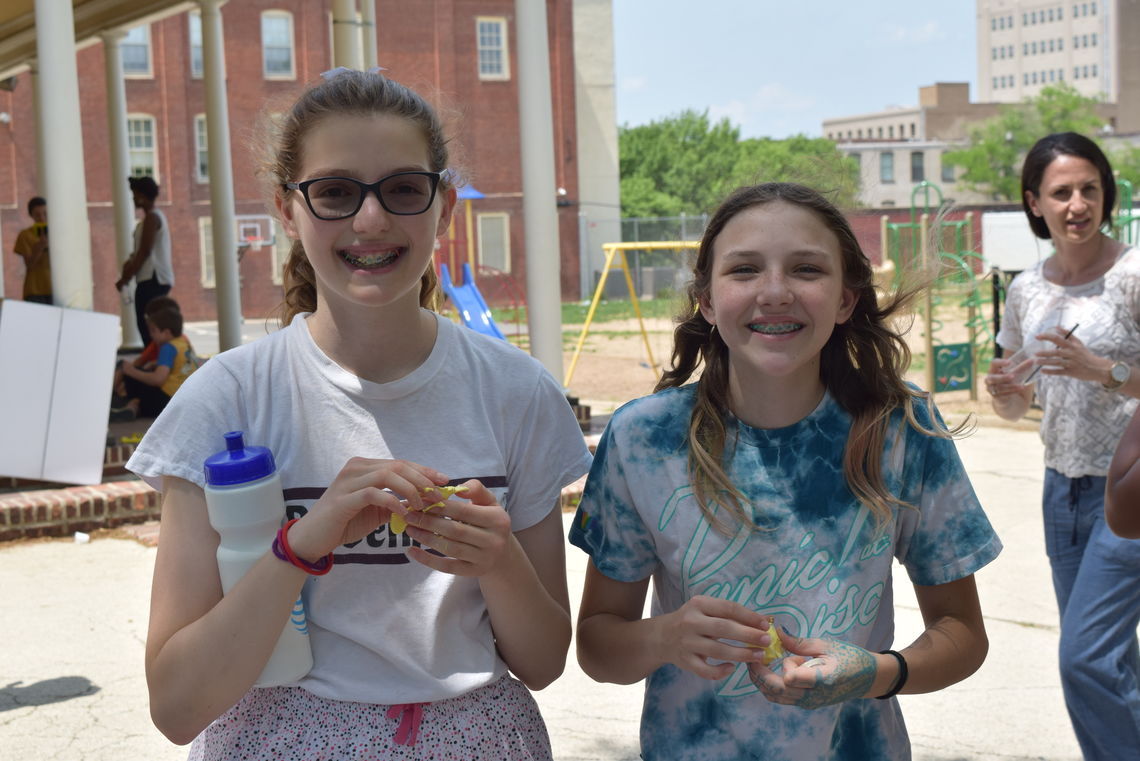
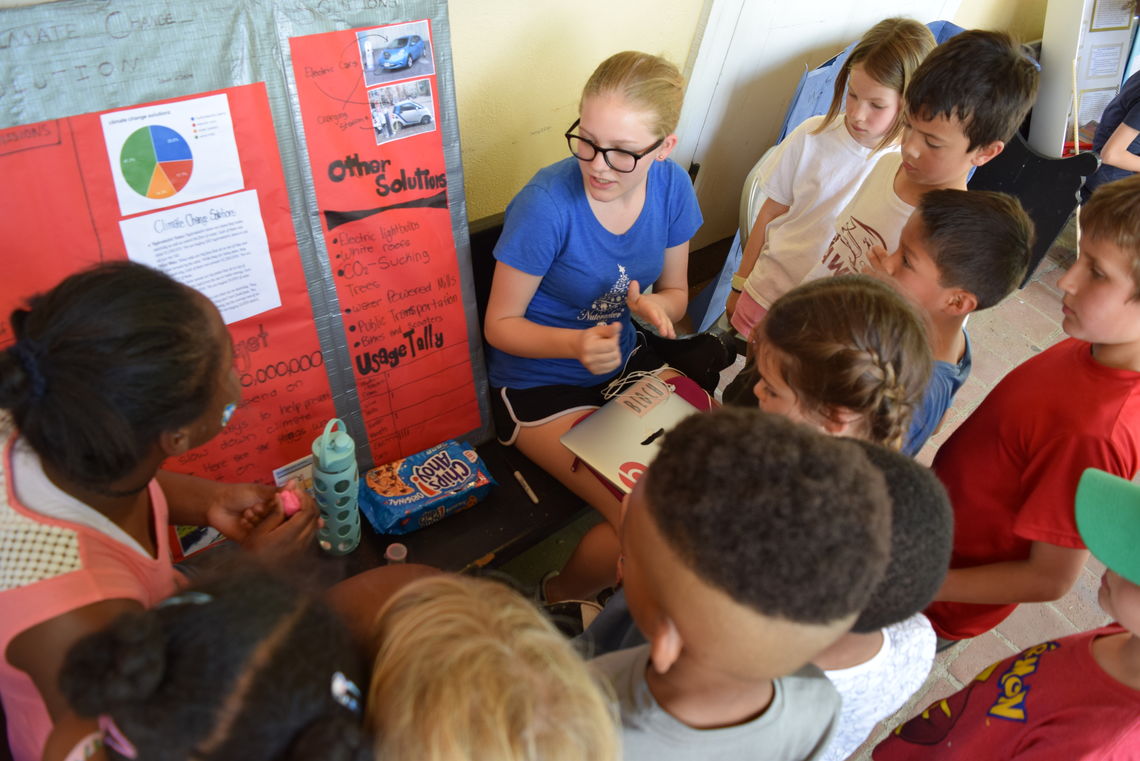
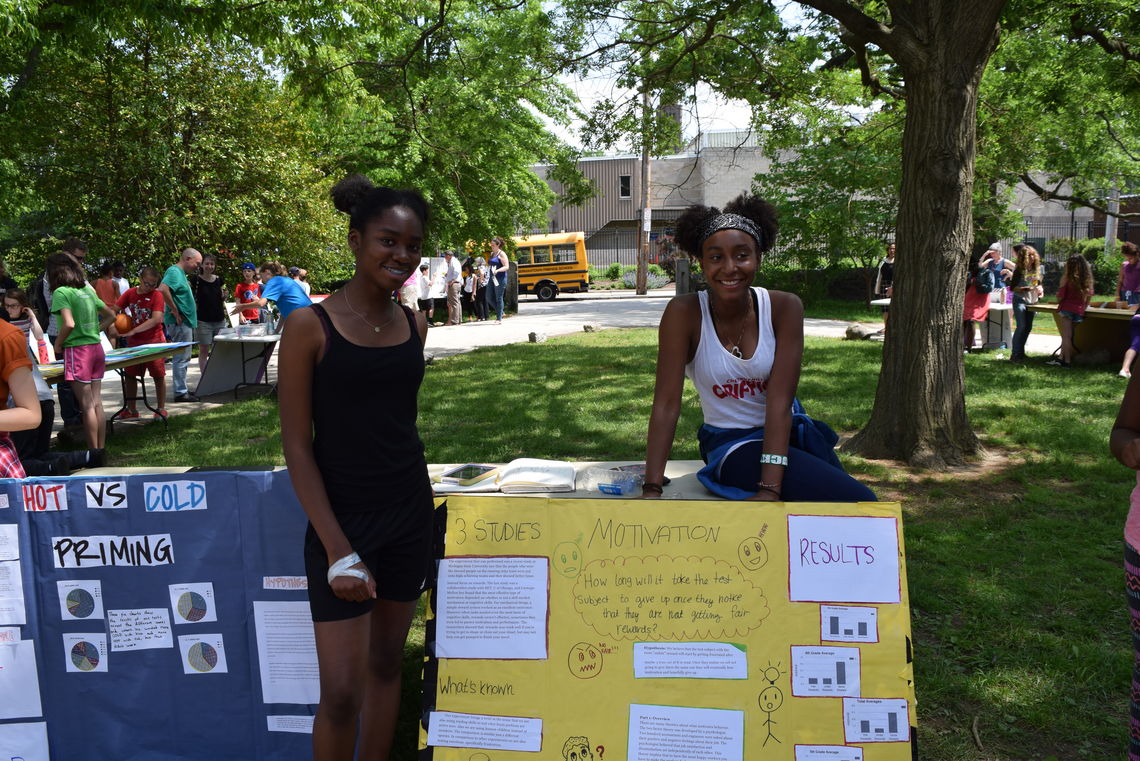

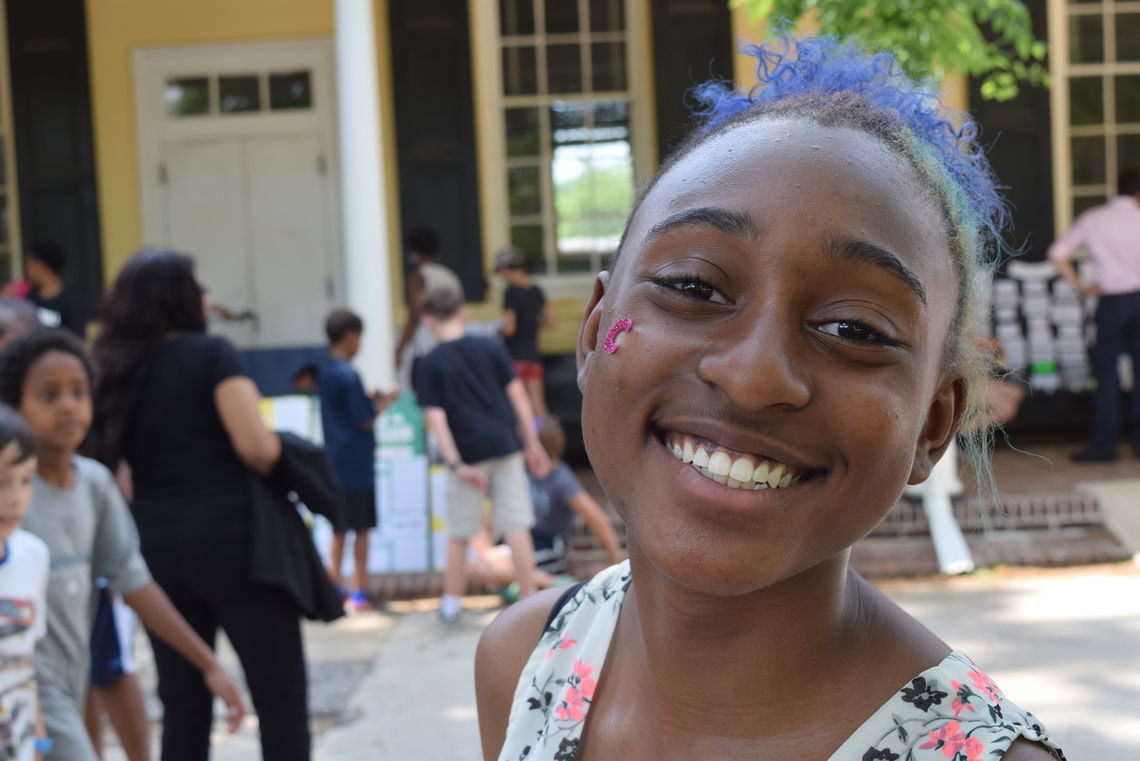
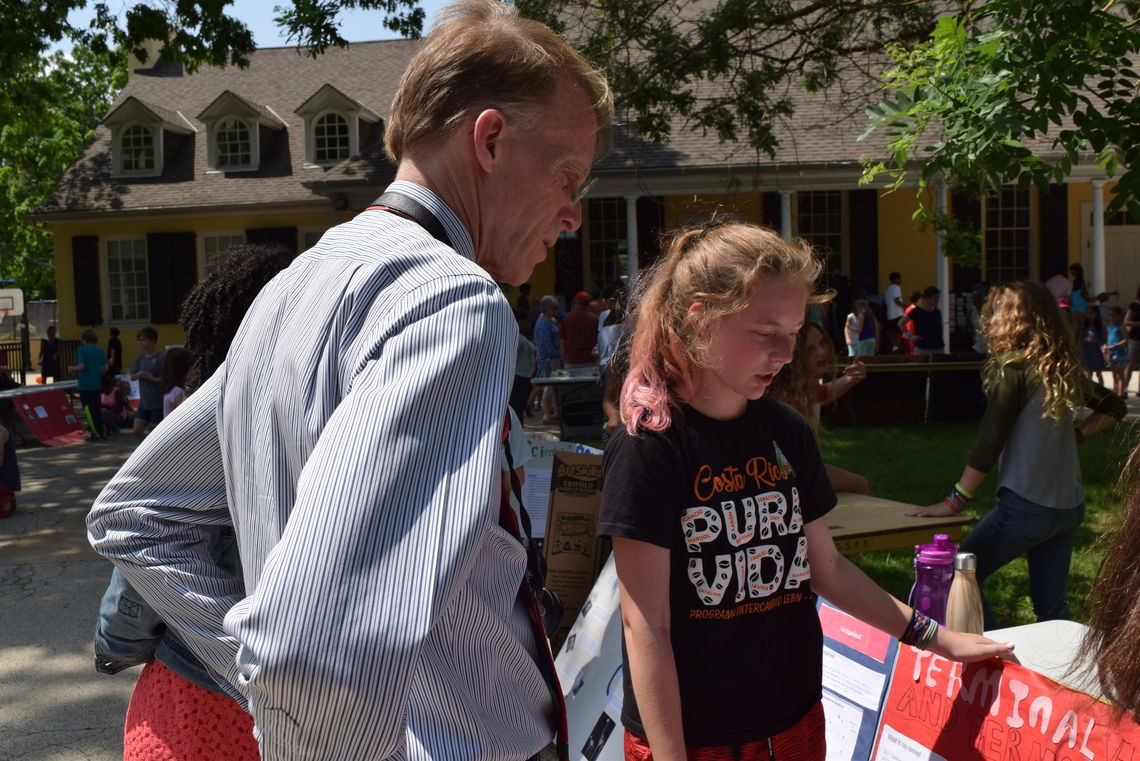
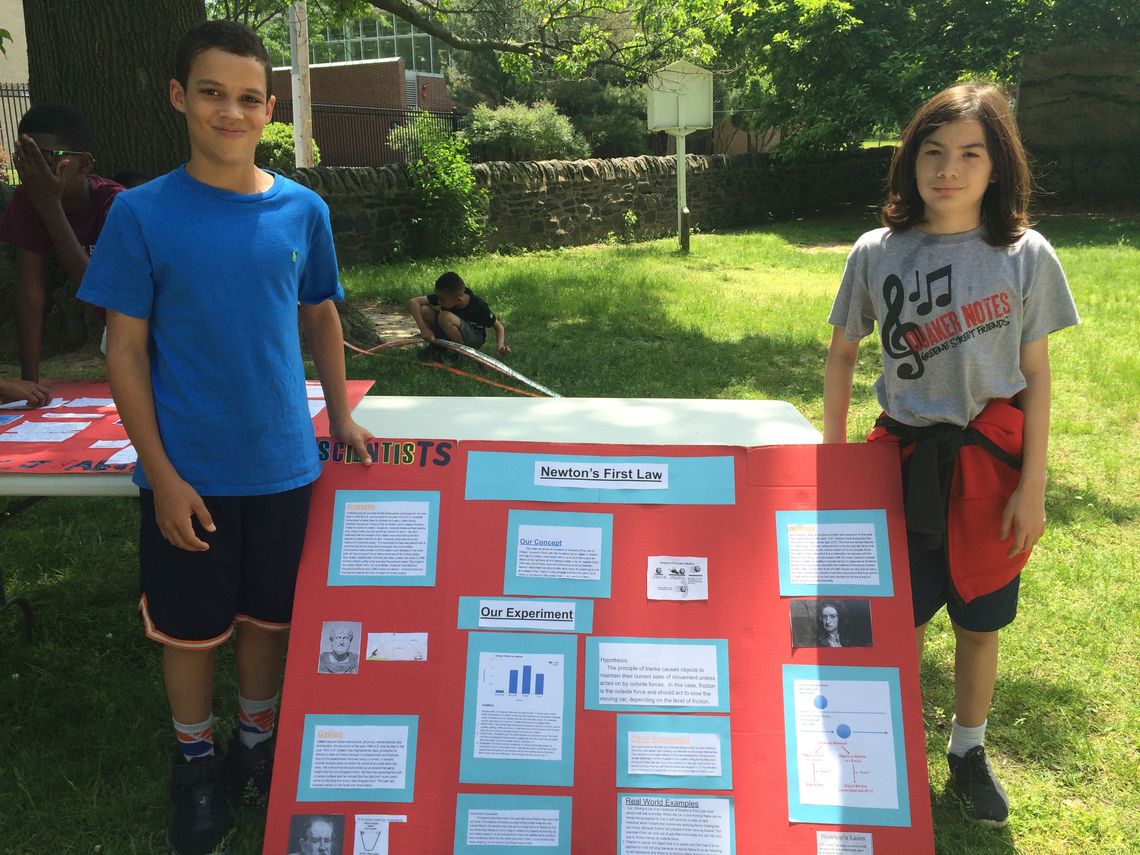
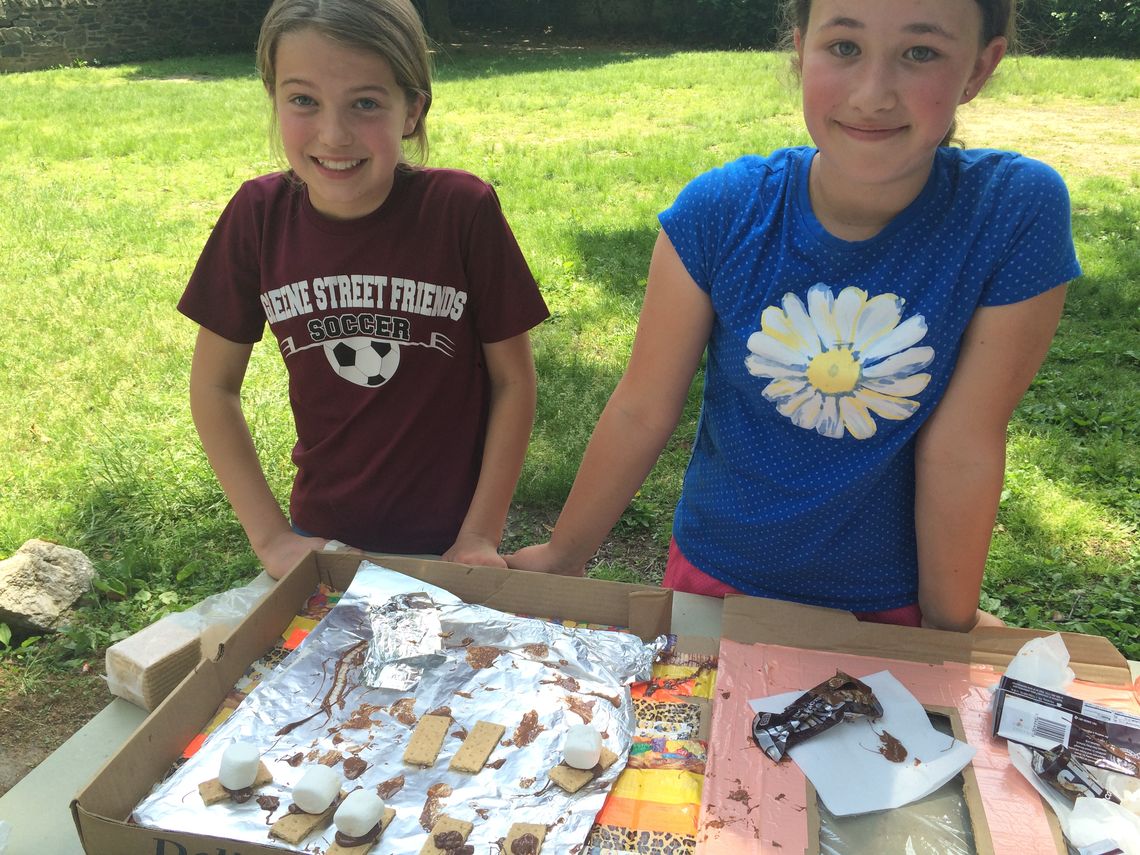
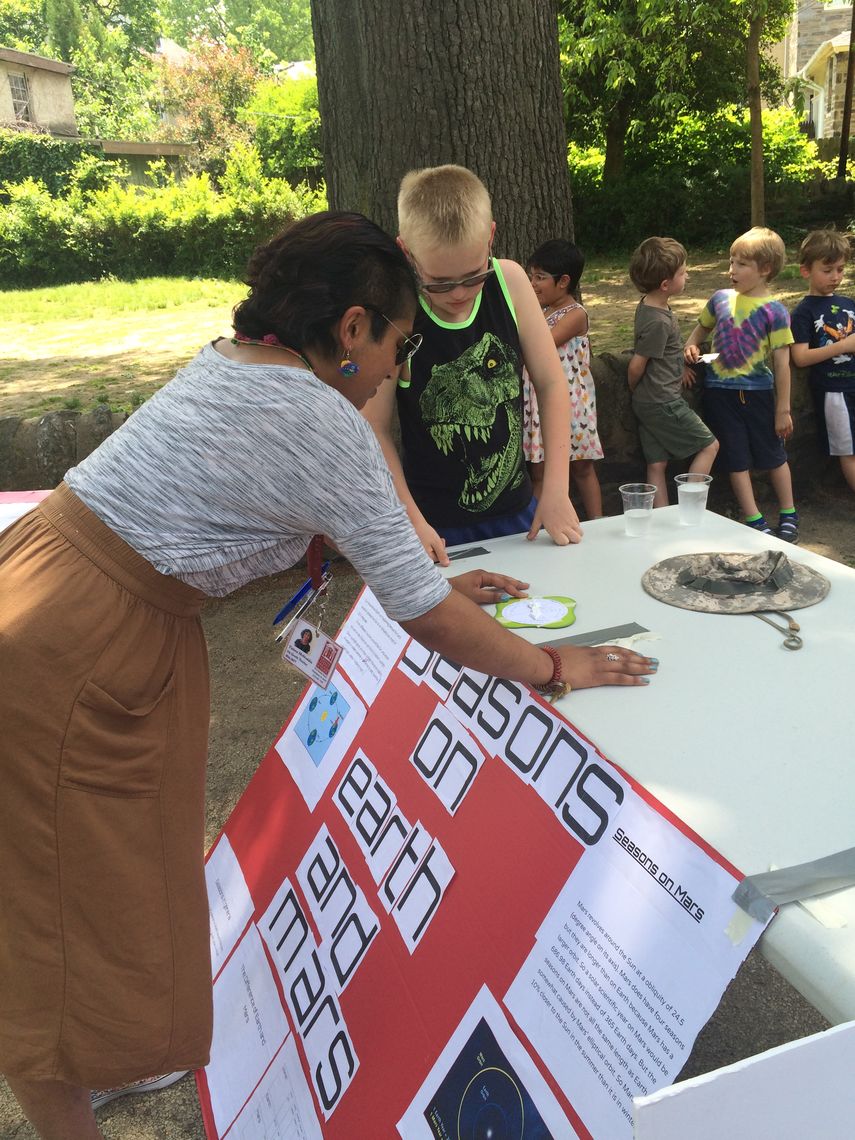
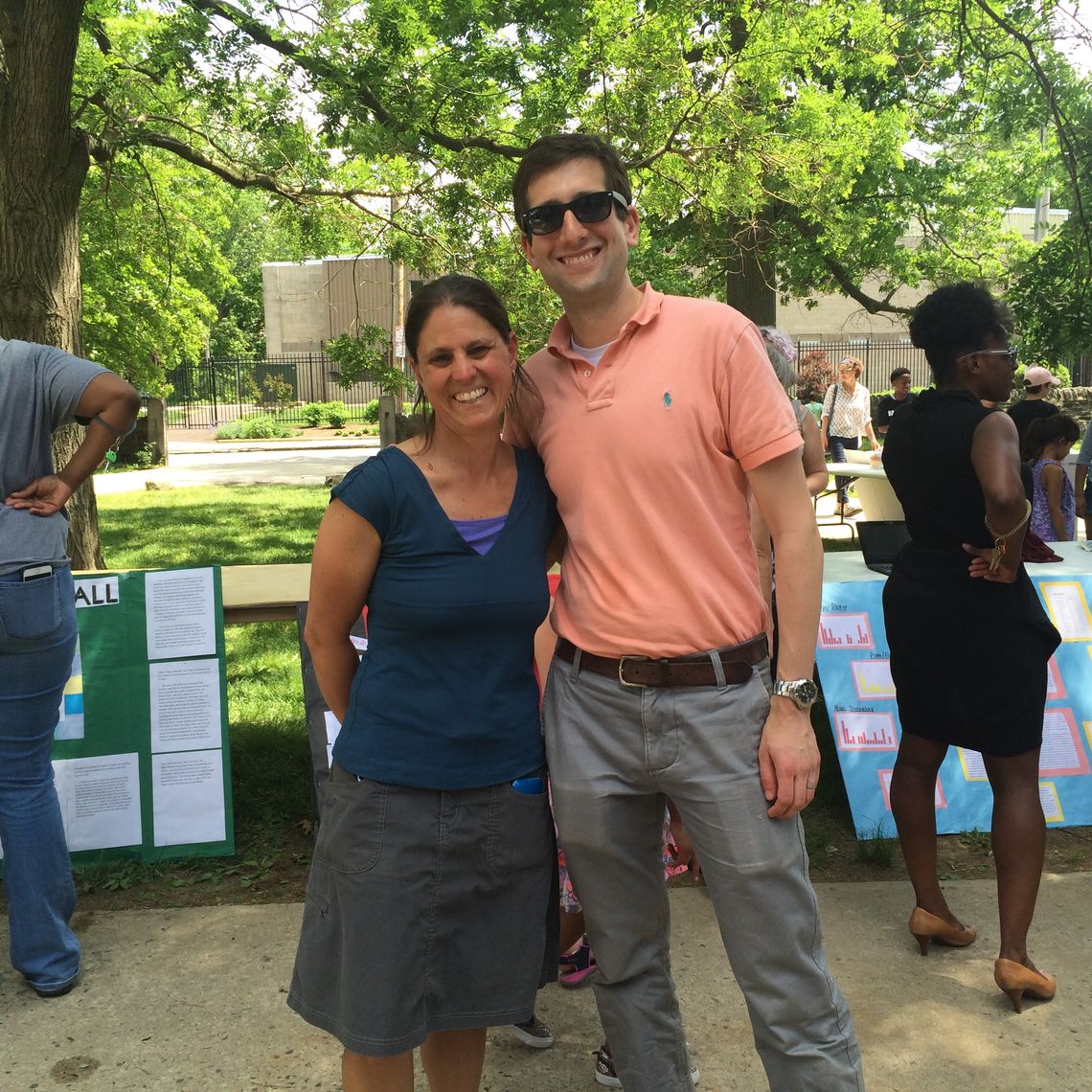
Last week, 5th-8th Graders participated in Greene Street Friends School’s Annual Science Showcase. Each student selected a topic to research, experiment upon, and then present to fellow students and the wider school community. Lower School students enjoyed visiting their Partners’ experiments and asking questions about the experiments and projects.
Students selected a wide variety of topics to study, from climate change to the classification of animals. Ana and Jesse provided a timeline for the classification of animals, researching figures like Aristotle and Carl Linnaeus who contributed to this process. Lucy and Rosie also learned about animal classification and created a game in which participants placed different animals into their correct phyla, based on various features.
Elliot and Idris studied static electricity with a balloon and van de Graff generator, and Ollie focused on the seasons of Mars. Visitors learned that any planet with a tilt in its axis has seasons and the seasons on Mars are longer than those on Earth because its years are longer than Earth’s. Von, Claire, and Jamie researched solutions to climate change, spending $2.8 billion to reduce carbon emissions through solar panels, fuel cell cars, forestation, hydroelectricity, and wind power.
Ella studied Newton’s 3rd Law, which states that every action has an equal and opposite reaction. NASA uses this theory to calculate thrust in rockets and Ella studied the theory using various methods, including a balloon tied to a straw that was thread on a string. Sara Jane and Audrey studied solar radiation and provided s’mores to visitors- making their experiment a popular one to visit!
Many 8th Graders studied neuroscience, including topics like memory, conformity, and priming. Dylan and Lila found that students who drew with a red marker estimated that the room temperature was higher than those who used a blue marker. Annie, Alex, and Malachi studied conformity by playing an unappealing song for students, then asking whether or not they liked the song. Despite written answers indicating disapproval, verbal responses largely conformed to whatever the oldest students in the room suggested.
Sara and Owen studied memory implantation by creating “Grace Moore," a fake GSFS teacher, complete with picture and brief biography. Grace was then shuffled into a stack of 3 actual, former GSFS teachers. Students were asked whether or not they remembered Grace, with 72% responding that Grace did exist and some even remembering specific characteristics; they found students were more likely to have this false memory when a picture of Grace was not included. Thank you to all of our scientists who participated in this year’s showcase!
Clone Homework
Cloning this assignment will create new assignments that copy all the current information associated with this assignment. The only change will be the date which will be based on the information you enter below. Once you have cloned an assignment, information updated in one of the cloned assignment will not affect the other cloned assignments.


